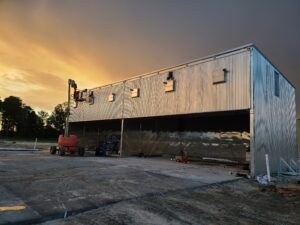Maximizing Timber Quality Through Knowledge of the Wood Drying Kiln
Wood, a resource both ancient and contemporary, finds its place in almost every corner of our daily lives. Its utility is vast, from the homes we live into the artifacts we cherish. Yet, for wood to truly shine in its applications, a crucial step is often required – drying. The centerpiece of this essential process? The Wood Drying Kiln.
 Understanding the Wood Drying Kiln
Understanding the Wood Drying Kiln
At its core, a wood drying kiln is a sophisticated chamber designed to regulate specific conditions, ensuring the moisture content of lumber is precisely reduced. This treatment endows wood with enhanced solidity, resilience, and resistance to deformities such as warping and shrinking.
The Imperative of Drying Wood
- Strength and Endurance:
The transition from damp to dry does wonders for wood. The drying process fortifies its inherent strength, making it an ideal choice for construction and other load-bearing applications. - Guarding Against Decay:
Wood, in its natural moist state, can become a haven for fungi. By drying wood, we stave off these unwelcome guests, preventing the onset of decay and rot. - Ease of Work:
Moistwood can be a craftsman’s nightmare. When dried appropriately, wood becomes a joy to work with, be it cutting, joining, or applying finishes. - Stability and Longevity:
One of the most significant advantages of thoroughly dried wood is its consistent behavior. Such wood is predictable, and its dimensions remain stable, ensuring the durability of the end product.
The Art and Science of Kiln Drying
A kiln is not just an oven for wood. It’s an environment where the natural drying process of wood is expedited with precision.
- Temperature Mastery:
A kiln’s controlled temperature ensures that water trapped in the wood is evaporated efficiently. The heat needs to be modulated according to the wood species and desired drying rate. - Humidity Control:
Controlling humidity is just as crucial. The kiln ensures that as water evaporates from the wood, the surrounding environment can carry it away without re-saturating the lumber. - Air Flow Dynamics:
Ensuring even drying is an art. Fans and vents within the kiln ensure that every inch of every piece of wood dries at a consistent rate.
Diverse Designs of Kilns
Beyond the conventional and dehumidification kilns, innovation has brought forth variations tailored to specific drying needs, climate conditions, and energy considerations. The choice of kiln often becomes a strategic decision for businesses, with long-term implications on quality and cost-efficiency.
- Variables in the Drying Equation
The wood drying process is both an art and a science, influenced by: - Species Specifics:
From the dense mahogany to the lighter cedar, each wood species presents its unique drying timeline and requirements. - Initial Wetness:
Naturally, a sopping wet piece of lumber will take longer in the kiln than one that’s been air-dried for a few weeks. - Technicalities of the Kiln:
The design intricacies of the kiln – its insulation capabilities, the efficiency of its heating system, and the dynamics of its air circulation – all play pivotal roles. - Siege Equipment: Leading the Way in Wood Drying
For those keen on excellence in wood drying, Siege Equipment in Minden, LA stands as a beacon. Beyond offering state-of-the-art machinery, they are a reservoir of knowledge, guiding businesses on best practices in wood drying.
Siege Equipment; Wood Drying Kiln
The realm of wood drying is a blend of tradition, innovation, and meticulous attention to detail. As industries strive for perfection in their wood-based products, understanding and harnessing the capabilities of the Wood Drying Kiln becomes paramount. And for those seeking the pinnacle of quality, experts like Siege Equipment are always at hand to guide the way.
